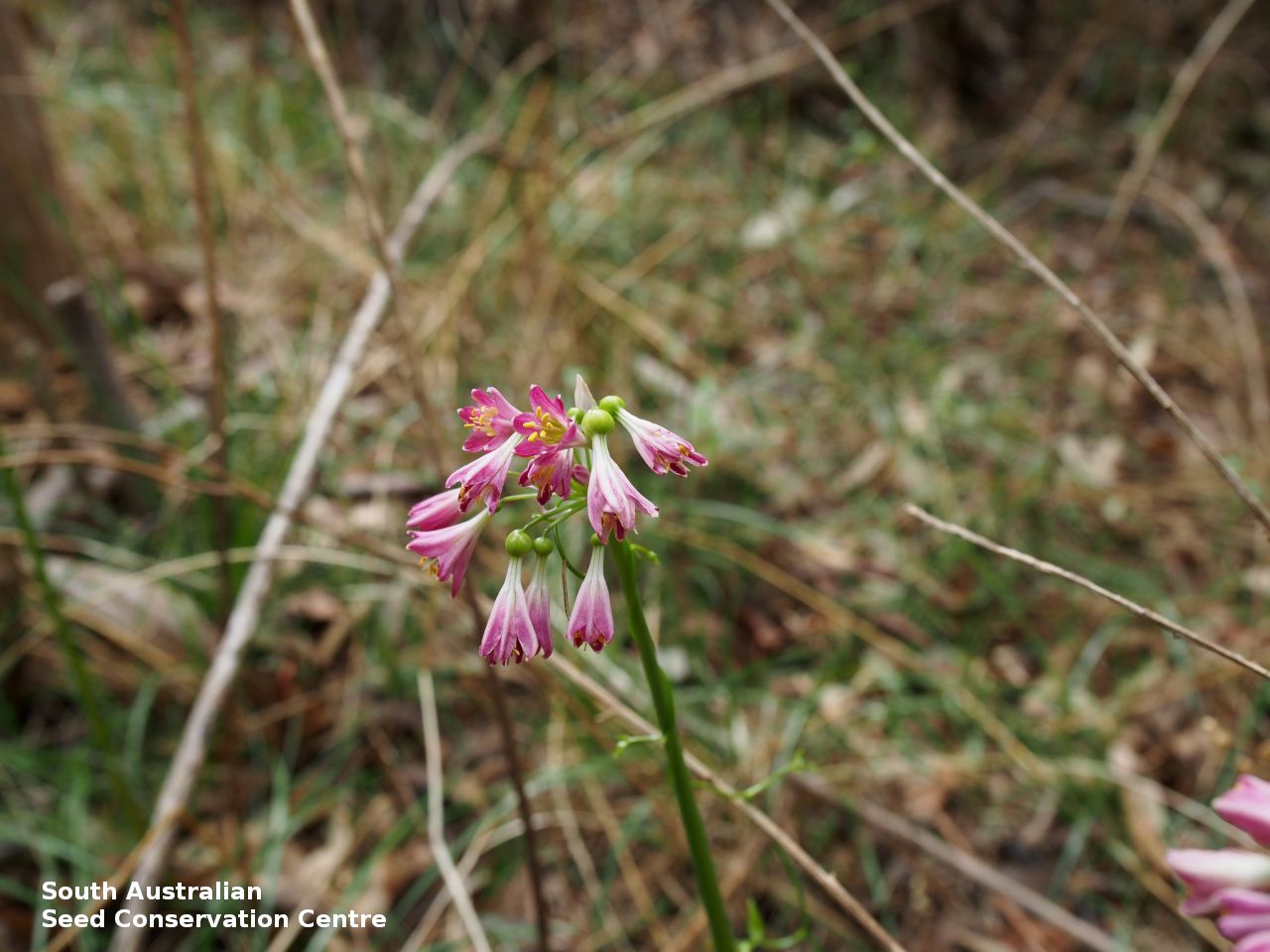
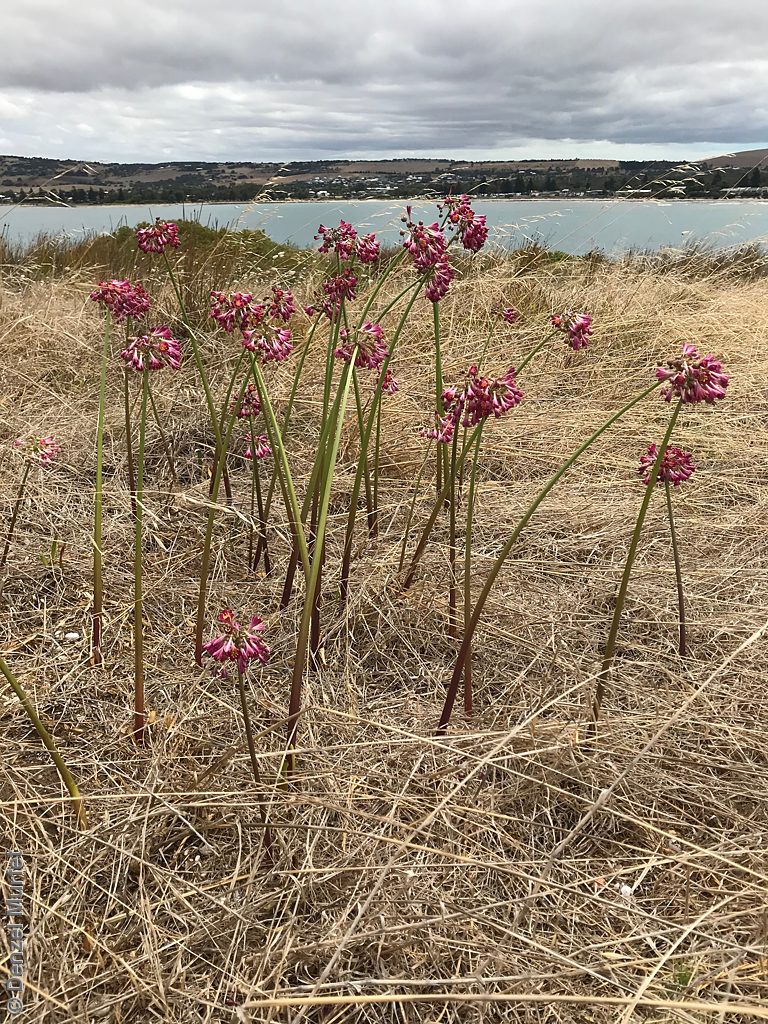

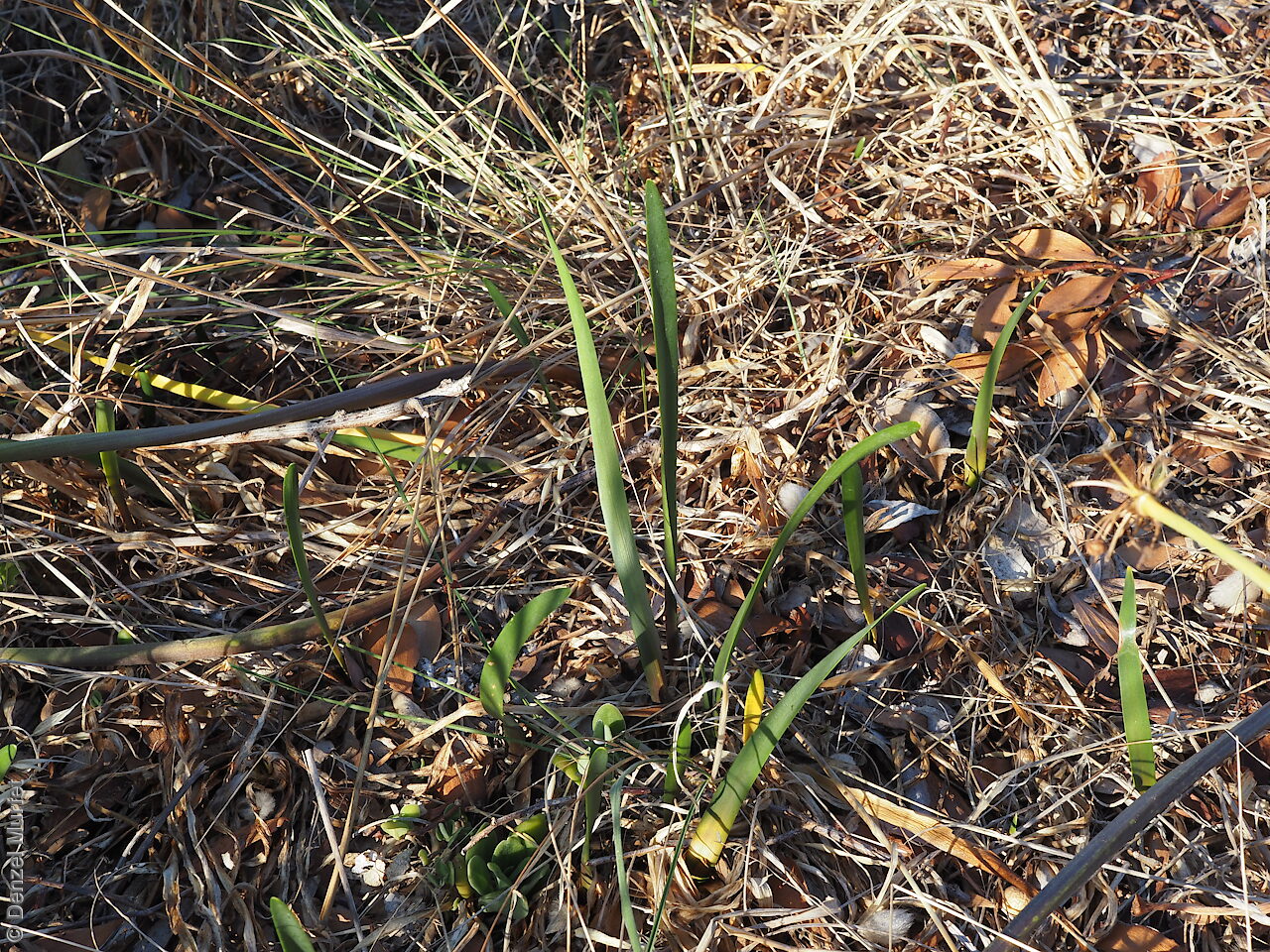
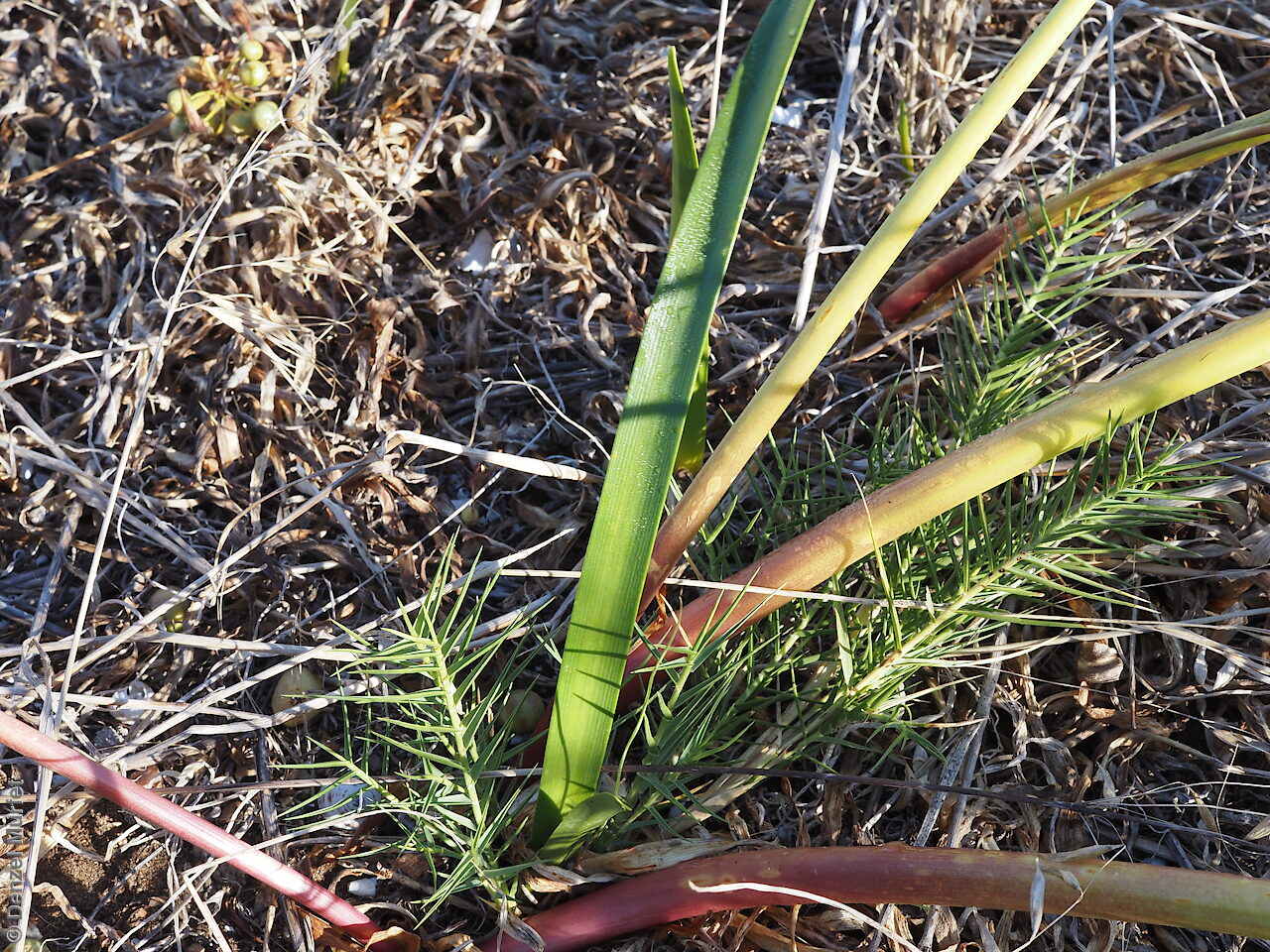
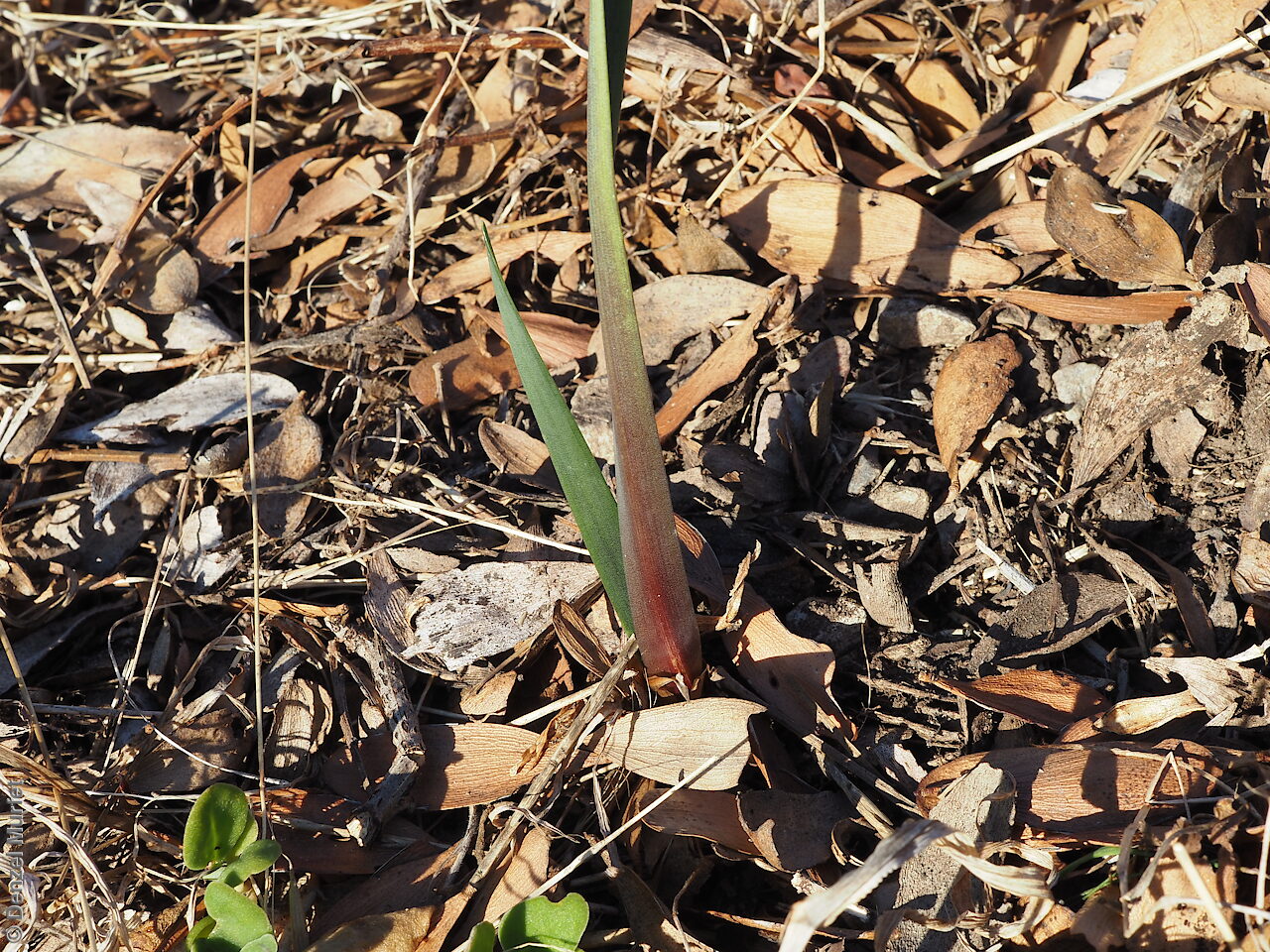
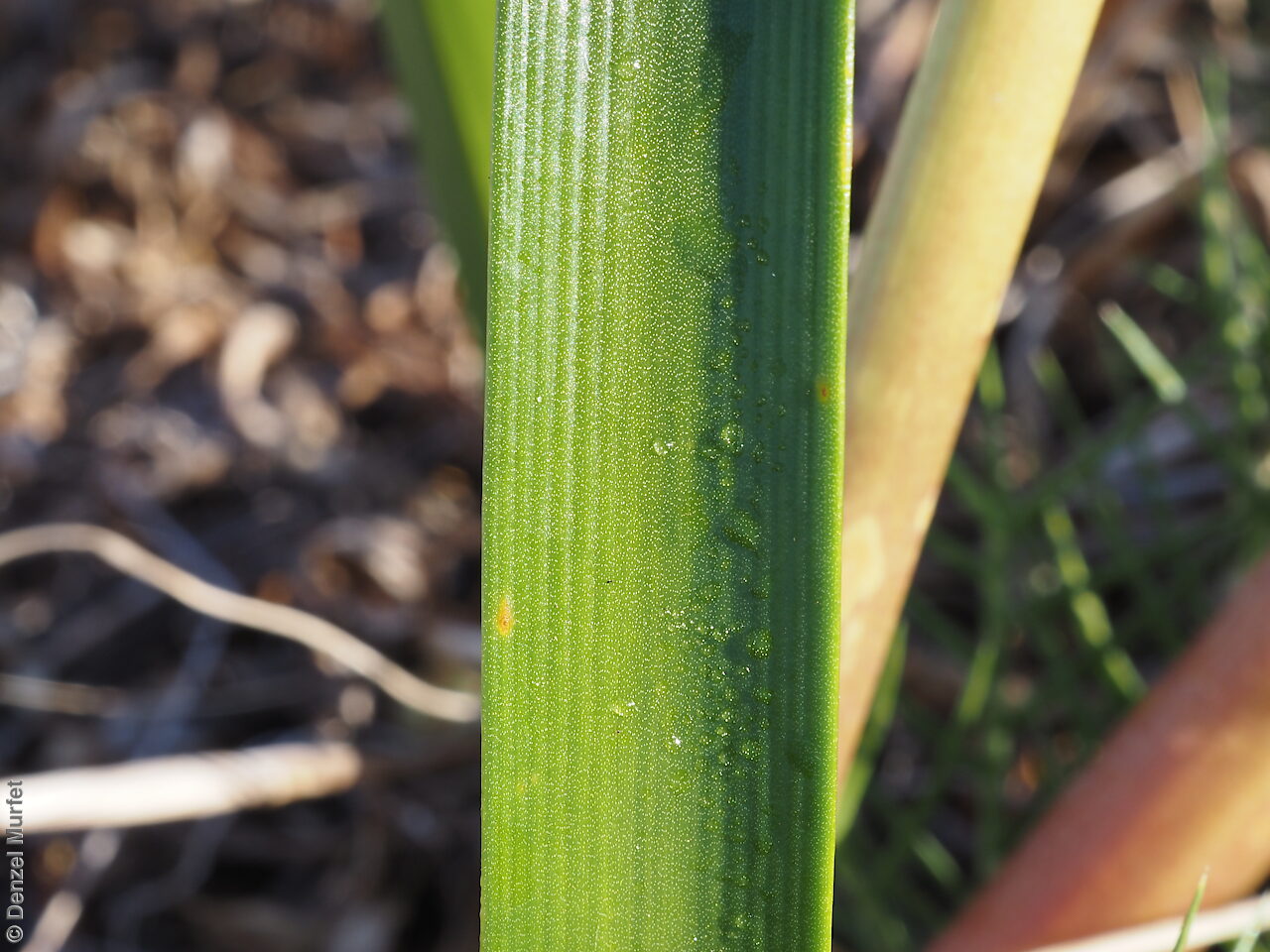
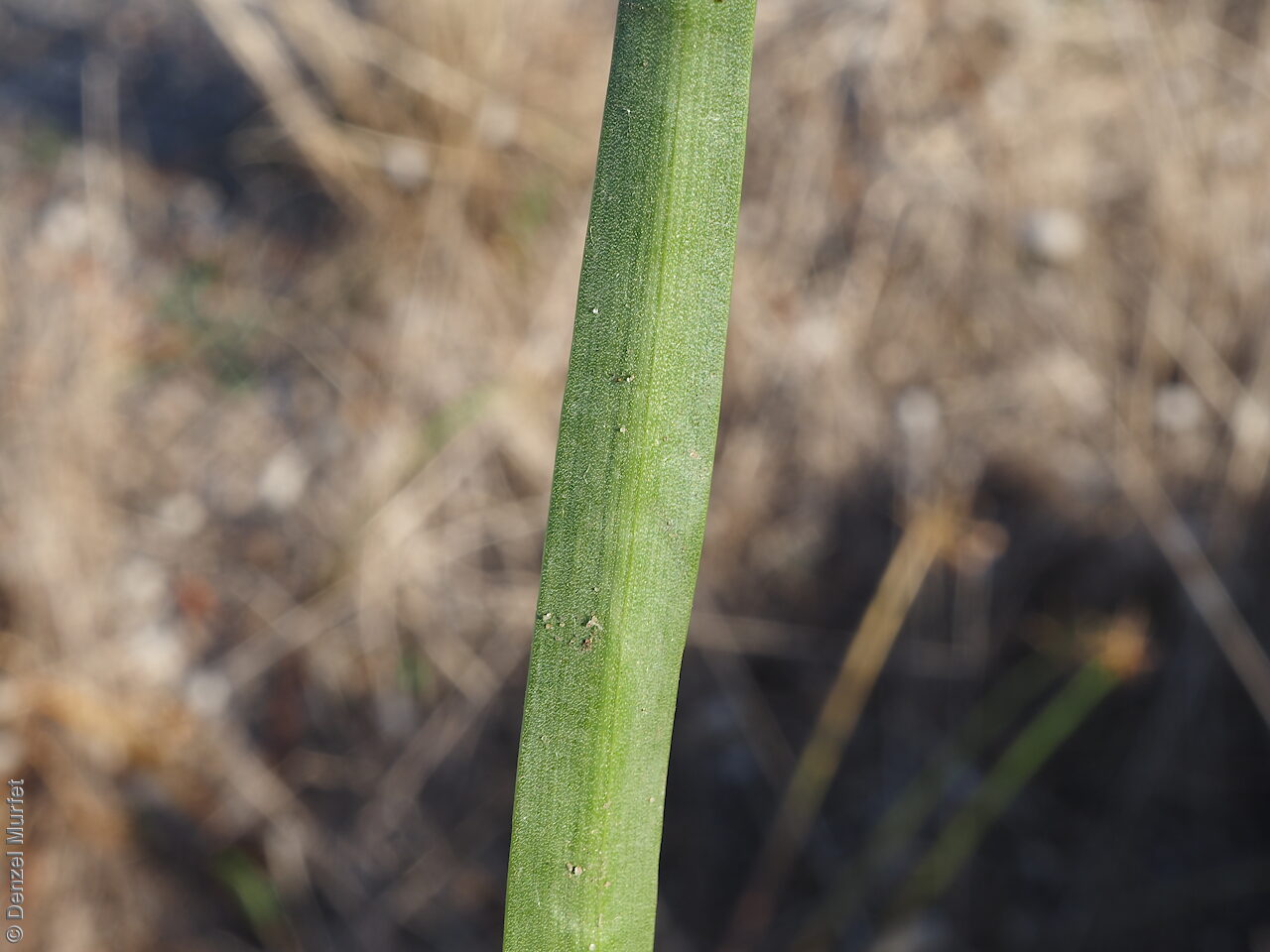
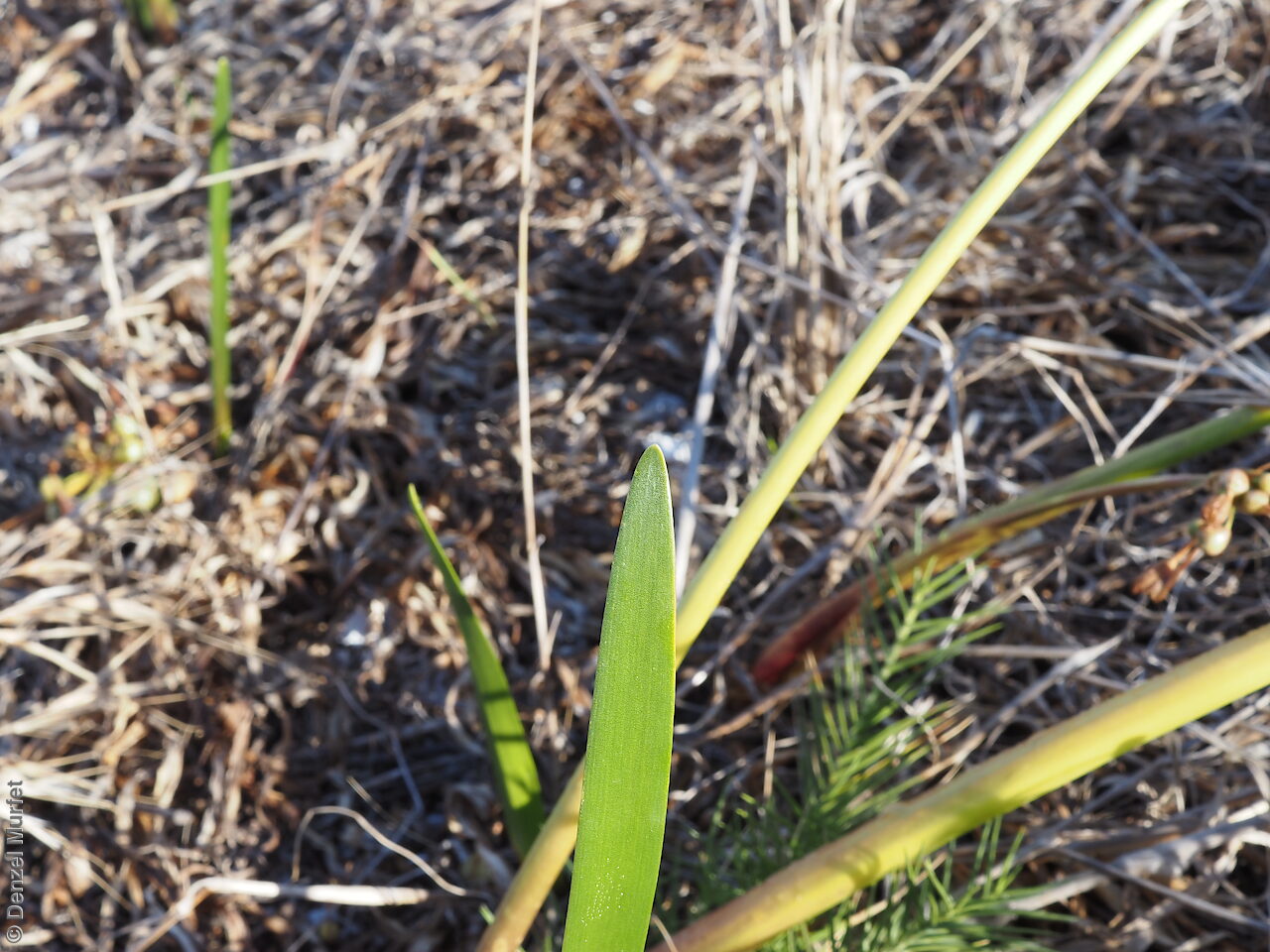
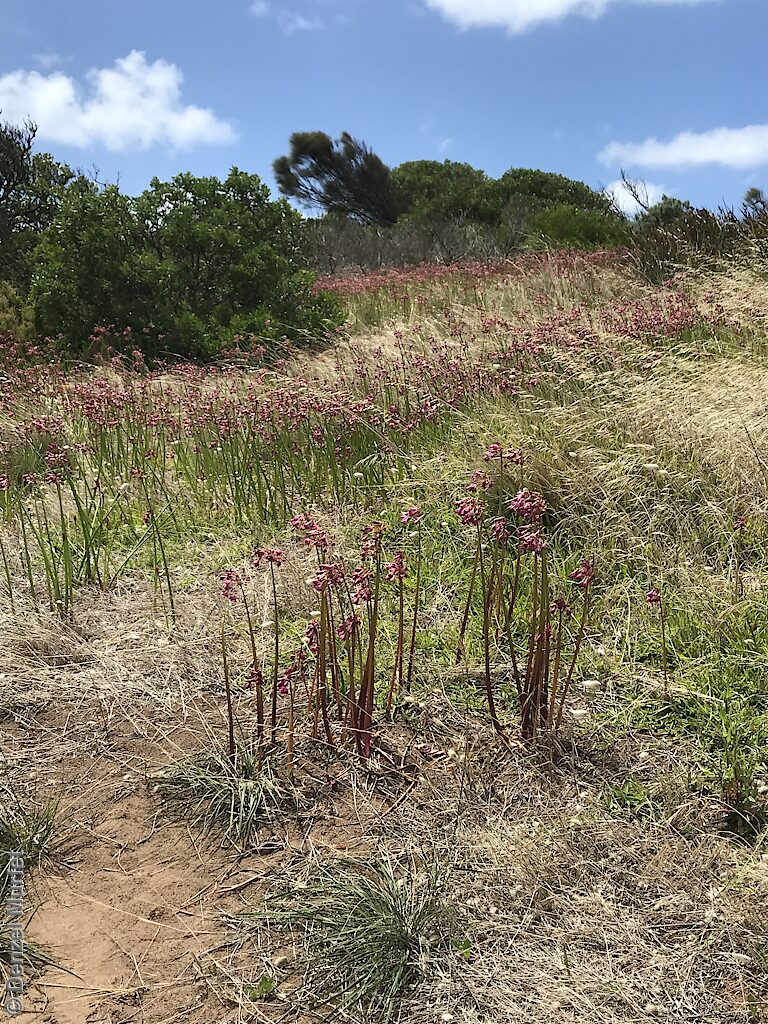
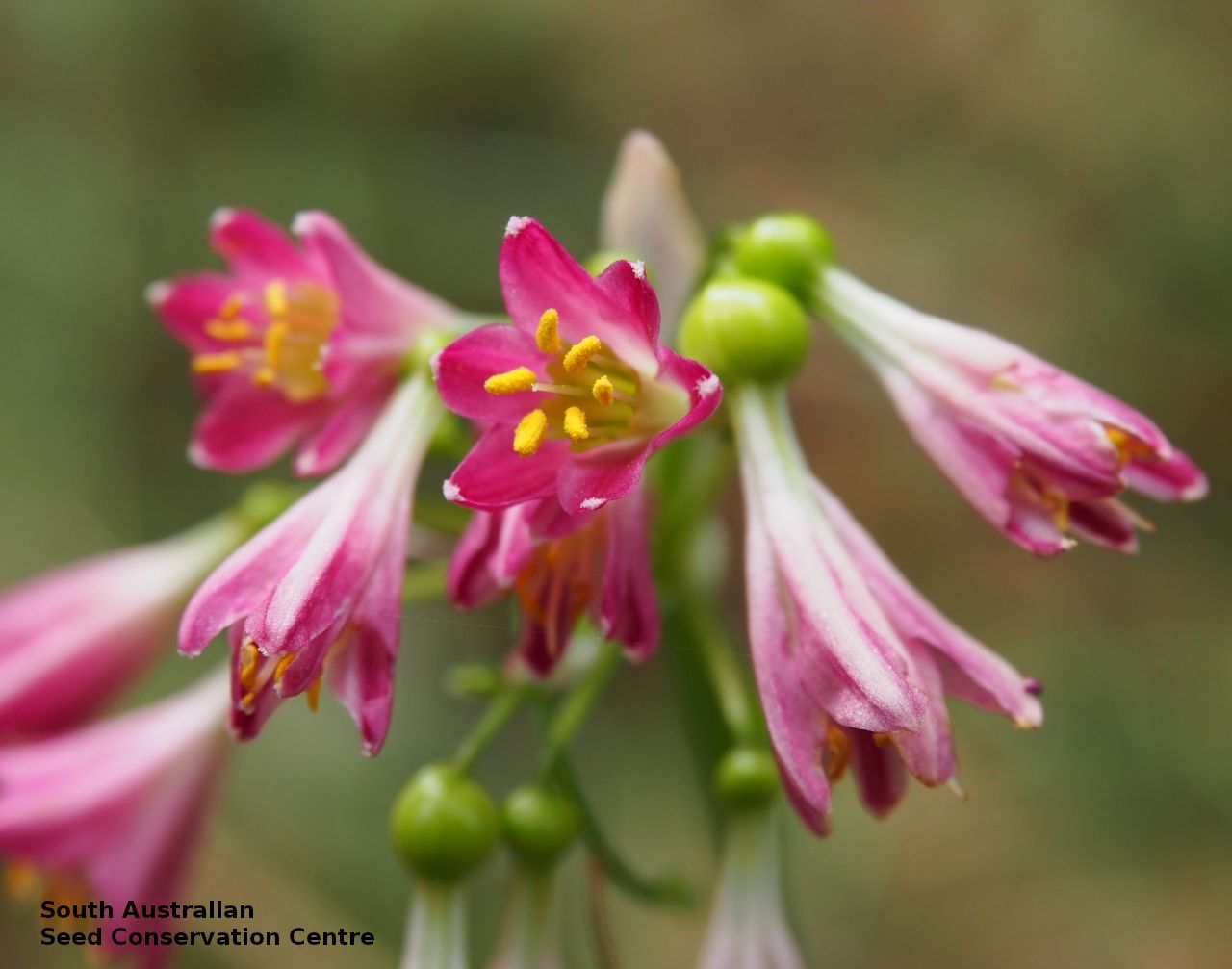
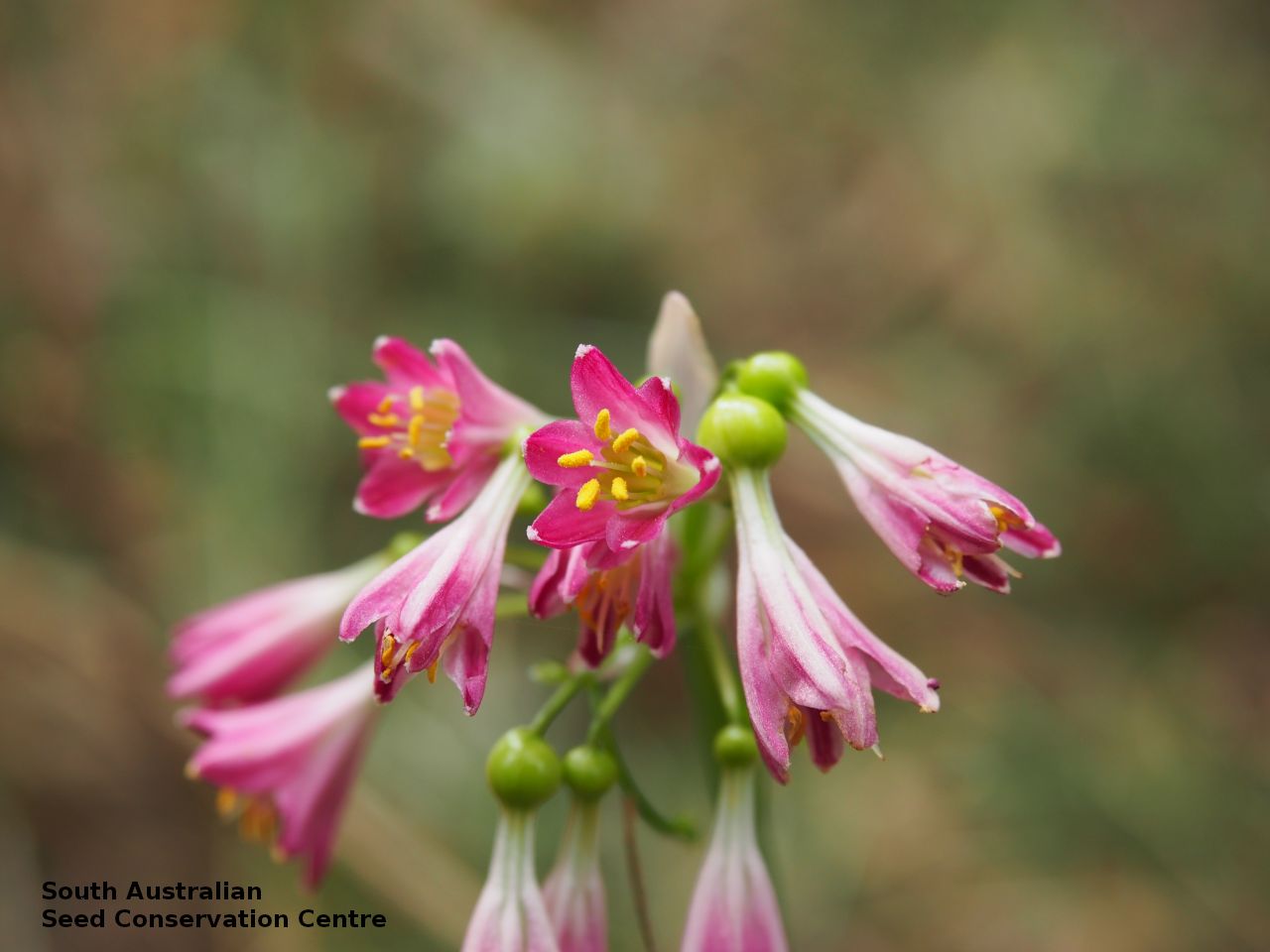
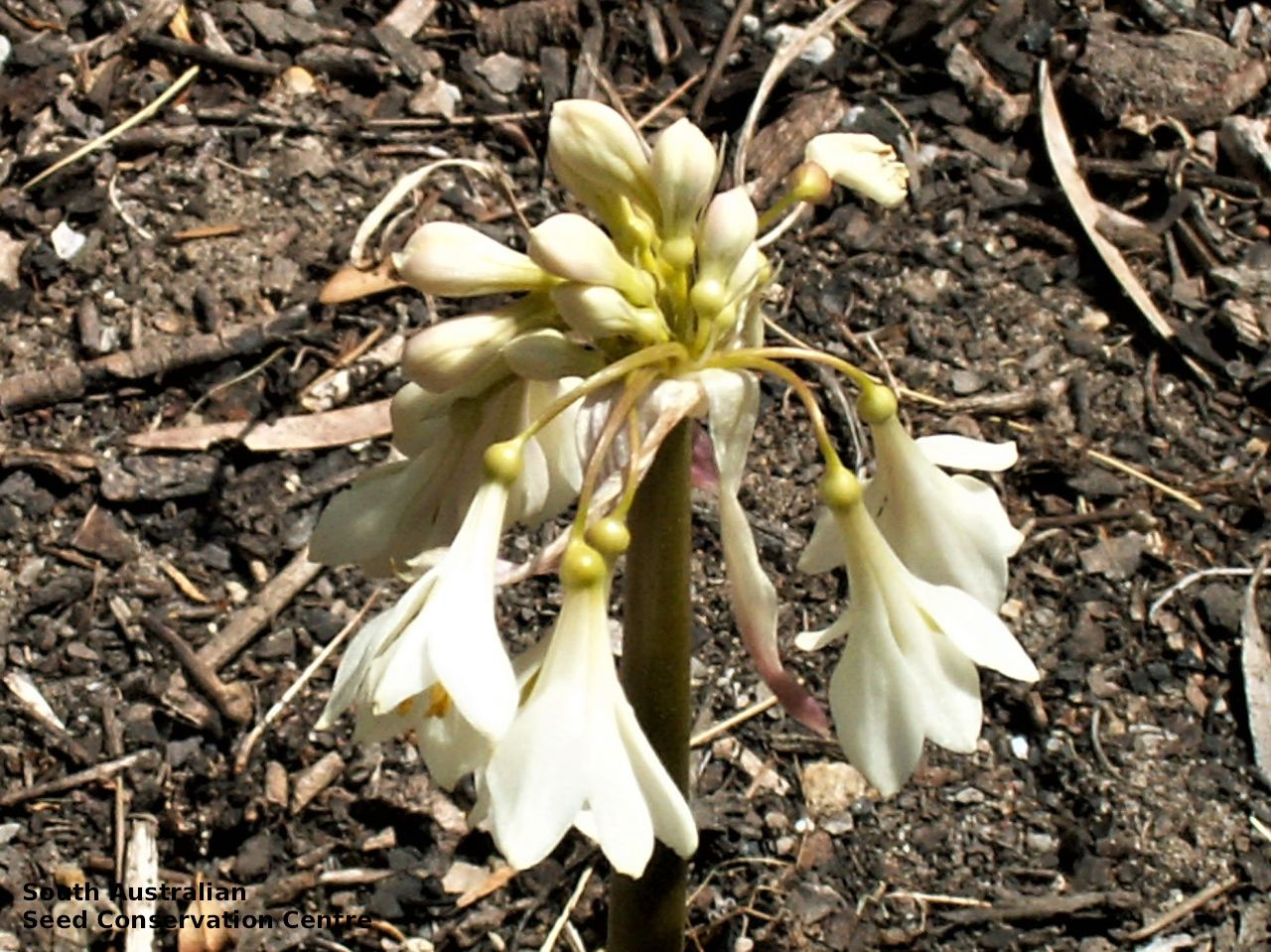
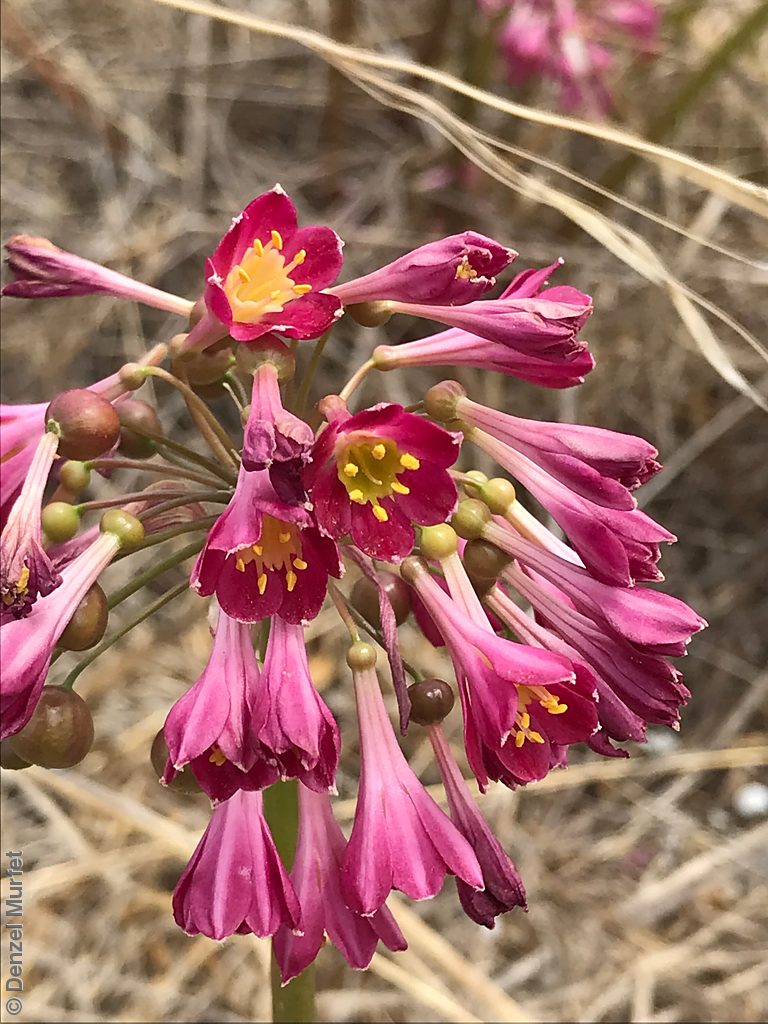
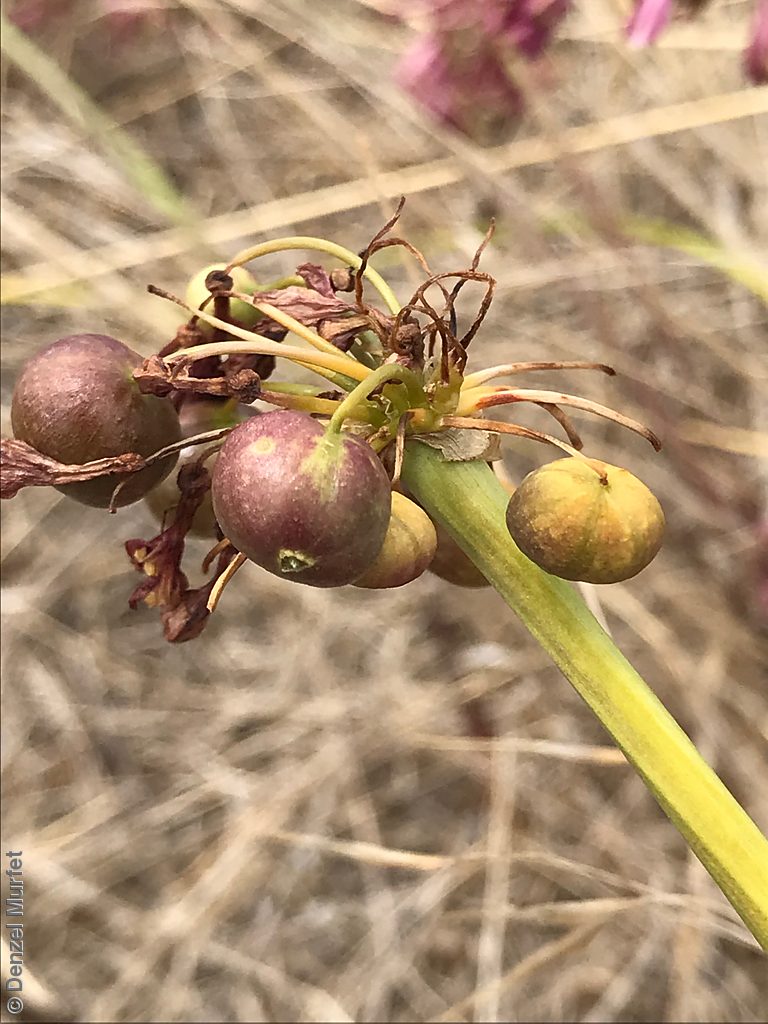
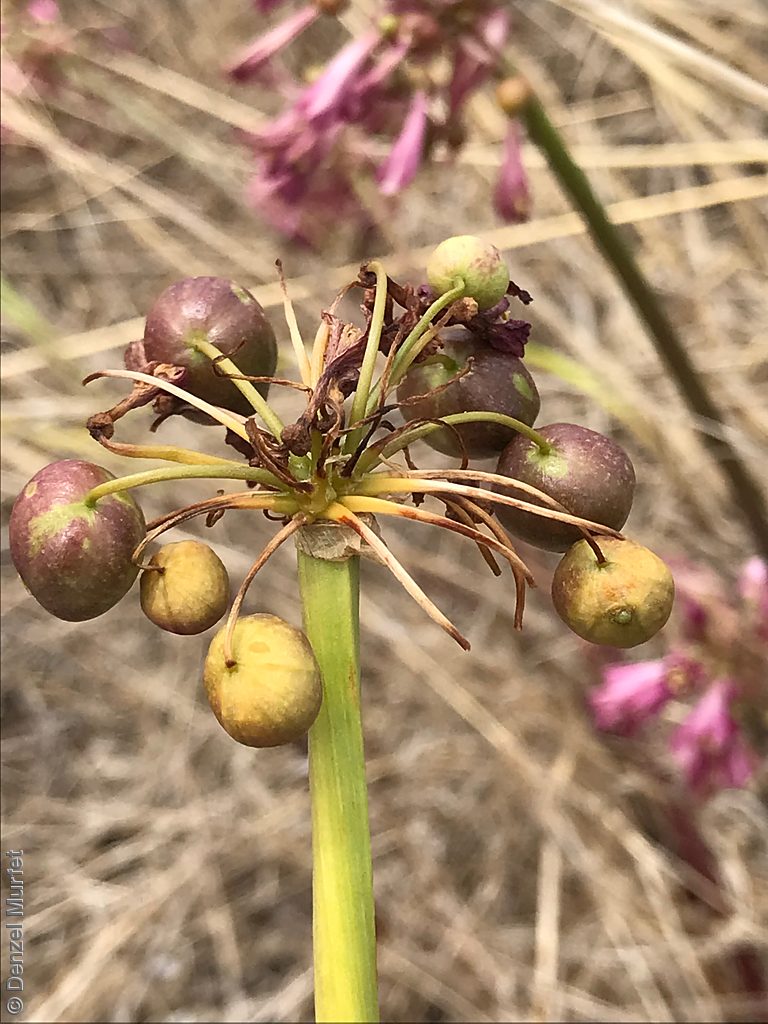


Botanical art
Common names
Garland Lily
Pink Garland-lily
Etymology
Calostemma from the Greek 'kalos' meaning beautiful and 'stemma' meaning crown,referring to the corona comprised of the filaments. Purpureum from the Latin 'purpura' meaning purple, referring to the colour of the flowers.
Distribution and status
Found in the Flinders Ranges, Yorke Peninsula and the Mount Lofty Ranges in South Australia, growing in open woodland and shrubland and in rocky site. Also found in New South Wales and Victoria. Native. Common in South Australia. Rare in Victoria. Common in the other States.
Herbarium regions: Flinders Ranges, Eastern, Eyre Peninsula, Northern Lofty, Murray, Yorke Peninsula, Southern Lofty, Green Adelaide
AVH map: SA distribution map (external link)
Plant description
Clump-forming herb with globular bulb to 6 cm diameter. Leaves, several, linear, flat to 60 cm long and 18 mm wide, developing after the flowering. Flower-head terminal on a long stalk with 10-30 purple tubular flowers in the umbel. Flowering between January and April. Calostemma luteum intergrades with C. purpureum along the Murray River producing various colour forms but can be distinguished by the generally larger flowers with more widely spreading petals and predominately yellow flower colour, with fewer scape bracts. Fruits are globular capsule to 1 cm diameter with a few seeds in each.
Seed collection and propagation
Collect seeds between March and June. Collect mature capsules off the plant or on the ground next to the plant. No cleaning is required if only seeds are collected. However, seeds can not be stored long term. Seeds are recalcitrant, that is they do not survive drying and freezing and cannot be stored long term for ex-situ conservation. Seeds are recalcitrant and will germinate readily.